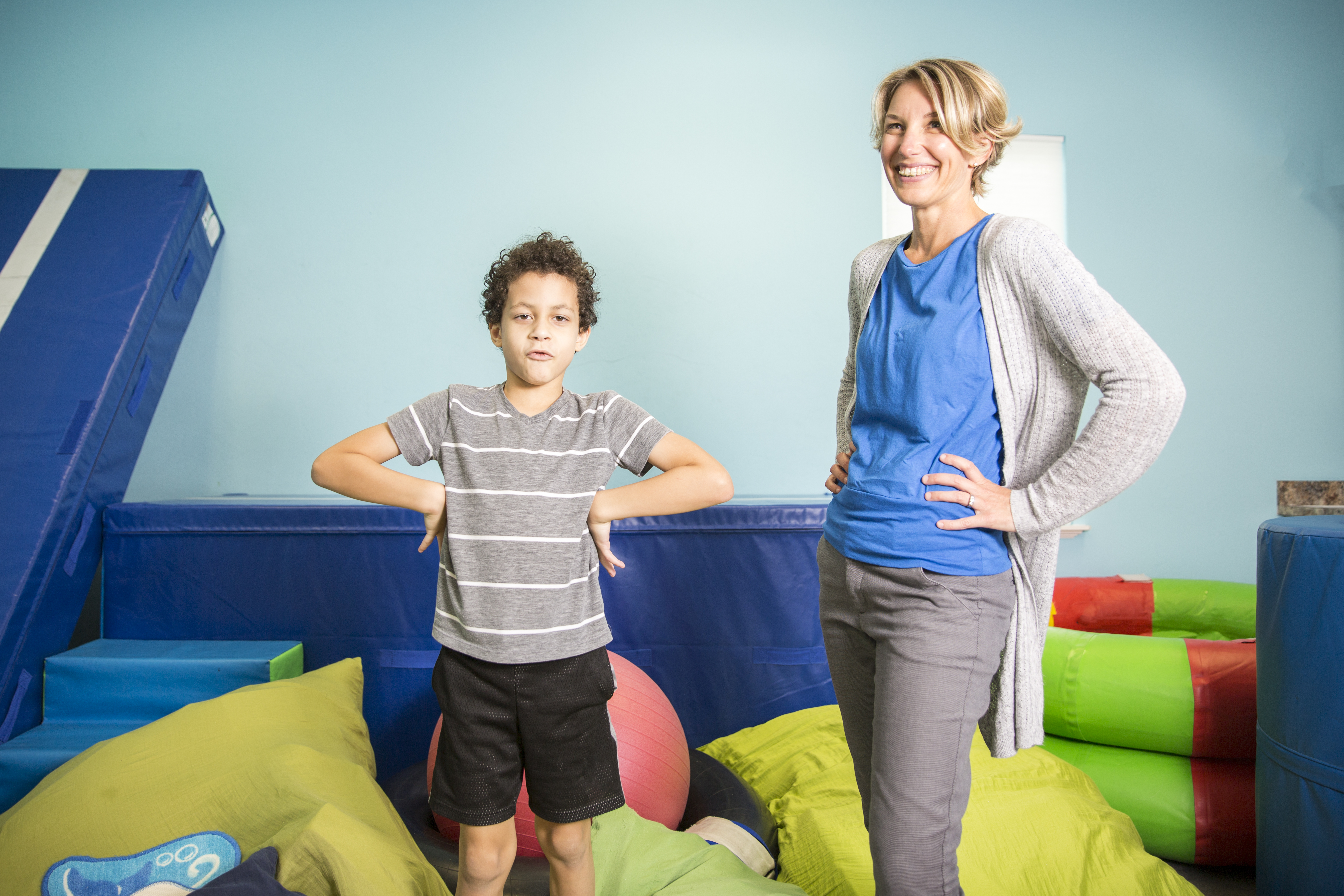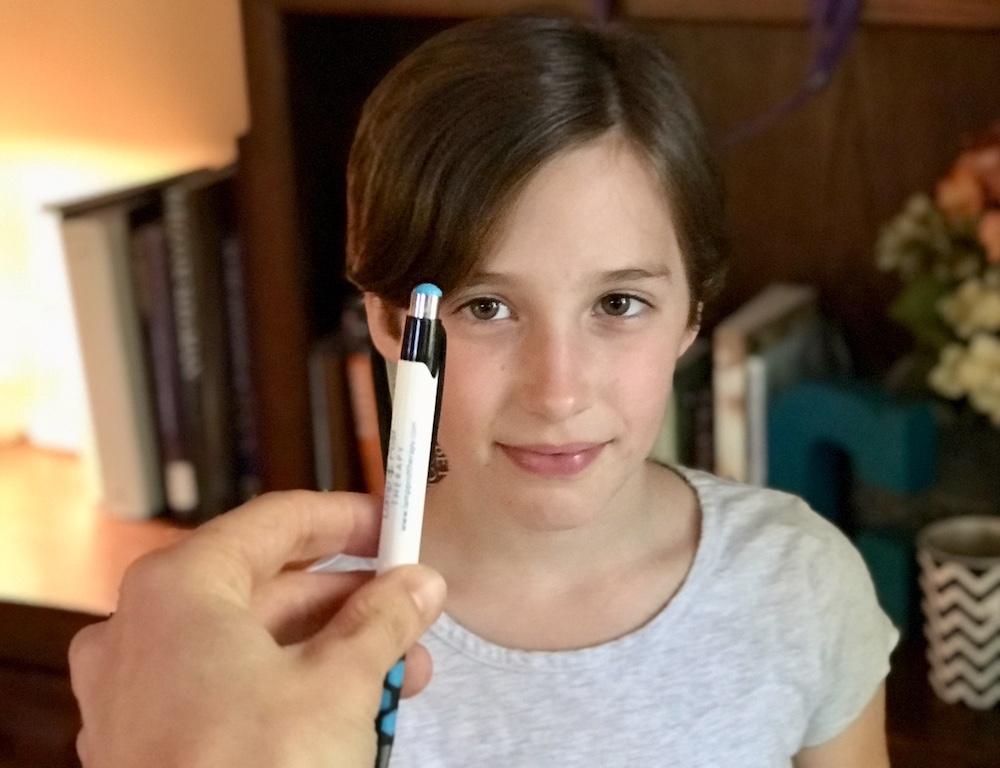“Sensory integration is the neurological process that organizes sensation from one’s own body and from the environment and makes it possible to use the body effectively within the environment.”
(Ayers, 1972)
(Ayers, 1972)

Framing sensory processing disorder within a medical model can be difficult. Parents often struggle to communicate the symptoms of sensory processing disorder. Often the issues are generally experienced by most kids and seem to be a part of childhood. Most quick office visits will not reveal the depth of the problem the child and family are experiencing. So how do we determine if it is sensory?
Sensory integration involves both the modulation of sensory input and the effective use of sensory input from all of our sensory systems – taste, touch, sound, smell and sight as well as the vestibular and proprioceptive systems. With these 7 systems with varying degrees of modulation, the result is high variability in patterns of sensory processing. This is why identifying red flags or symptoms is very difficult. This is also why treatment for sensory processing disorder must be tailored to each individual.
Because it is a neurological process, examination of the sensory structures would reveal “normal” function. It very much is a hidden disability because most children and adults with sensory processing problems appear perfectly capable and are often misunderstood. A person with sensory processing problems also does not usually know any different, as the way they process sensory input is their “normal.”
However, even when there is damage to sensory structures or neurological damage, a sensory integrative approach can be very helpful as it involves getting sensory and neurological systems to integrate together in the best way possible. Sensory integrative treatment for children with physical disabilities adds a unique component complementing and enhancing other treatment and therapies.
So how can it be identified during a short office visit? We have provided a quick way to screen below, but the main way of identifying sensory processing problems is listening to parents and caregivers. What parents will describe will likely revolve around issues of skill and how their child is behaving. Even if you are not sure, a referral for a consultation never hurts. We can help families sort it out and also provide referrals to other specialists. Our main goal is to help children, families and adults find the help that they need.
Children and adults with autism have significant sensory needs. The most recent publication of the DSM identified criteria for autism to include responses to sensory input. Hypersensitivities often impair the ability to function in new environments and make connections with others. Hypo sensitivities make learning to coordinate the body for daily tasks and activities difficult due to inefficient neurological feedback.
Verbal and social communication is often impaired due to difficulty coordinating the body, efficiently processing both sight (facial expressions, body language) and sound (words, voice inflections) and adapting to quickly changing social demands.
Improving the ability to receive and process sensory input and to develop skills through sensory-motor feedback make lasting neurological connections. This improves the ability to successfully function and connect with others and the world. Sensory integration builds skills for long term peace, joy and success for children and adults with autism.
Attention is a skill that is learned and can be enhanced. When children (or adults) are having trouble learning how to pay attention there are many factors. The most prevalent are a heightened arousal state, problems with postural control, difficulty with praxis, and/or problems with vision.
When a person’s nervous system is in a high arousal or high alert state, it is the sympathetic nervous system that is in charge. In this state a person’s nervous system is in protection mode and screening out external sensory inputs such as sound and sights. A person in this state is often on edge, has difficulty settling down, appearing uncomfortable and hyperactive, and often distracted by things in the environment.
A problem becoming more prevalent in children today, likely due to cultural lifestyle changes, is poor postural control/stability or poor core strength. When children (or adults) do not have a secure postural base, static postures like sitting or standing still is very challenging, difficult, or almost impossible. In children especially, they are either leaning or laying down or in constant motion. Learning how to pay attention and fine motor skills suffer with poor postural control as a midline or center is not well established and the hands do not have a stable base to work together or work with the eyes to develop eye hand coordination. Avoidance of these skills often looks like poor attention or laziness.
Praxis is the unconscious ability to coordinate movement. It is like autopilot for most every day tasks and activities. Children (and adults) who have difficulties with praxis must put conscious effort and thought into how to coordinate movement. This mental exertion requires intensely more effort making challenging tasks all the more difficult. Sustained attention is difficult and tapped out. In an effort to conserve energy, challenging activities, tasks or learning may be avoided and is coupled with the appearance of not trying. But the reality is the child or adult is putting forth more effort than others trying to coordinate the body to perform.
Visual problems also contribute to difficulty with attention. Visual acuity, or how well the eye can provide a clear picture, is what we usually think of when we say vision. However, there are many other aspects of vision that contribute to our ability to use vision functionally. Eye muscles coordinate together to align the eyes both together as well as to integrate with head/neck movement and with our vestibular (balance, gravity, and movement processing) system. Coordinating eye movement is referred to as oculomotor control. When the eyes struggle to coordinate for tracking objects in the environment or lines on the page, shifting focus from one object to another, or even have difficulty fixating on an object, paying attention is very difficult.
The brain’s ability to interpret or provide meaning for what the eyes see, known as visual perception, makes identifying symbols such as numbers and letters, depth perception and spatial skills possible to participate in academic and daily activities easy and efficient. When visual perception is difficult, visual processing is strenuous resulting in taxed attention. Often, improving oculomotor skills and visual perceptual skills help to develop attention skills.
Children and adults with sensory processing disorder often have generalized anxiety as a result. When the world does not make sense, your body and brain have difficulty adapting, and expectations continue to mount as you get older. A person with a sensory processing disorder experiences a tremendous amount of stress and does not always have the understanding or skill to identify and utilize strategies to reduce stress. The first step in the Lamp Post’s occupational therapy program is to first organize sensory inputs to reduce stress and then to learn to identify stressors and develop strategies for self-regulation.
Rituals are often a self-regulation strategy. They offer predictability and a sense of control. When the world does not make sense and it feels overwhelming, a common strategy is to attempt to gain a sense of control by making the world as predictable as possible through rituals and doing and making things just so. Sensory integration treatment can help by reducing anxiety and stress and build skills for greater adaptability with tasks and environments.
Behavior is a form of communication about how a child or adult is experiencing the world. When a person’s nervous system has a low threshold for sensory input, or is easily excited, they are easily overwhelmed. It is also difficult to develop skills for self-regulation when a nervous system is flooded with input. The fight or flight protective mechanisms are quickly engaged resulting in oppositional, defiant, or avoidance behaviors.
Children and adults who have difficulty coordinating their bodies efficiently are often mentally taxing themselves by thinking through tasks that typically are performed without conscious effort as if on autopilot. Because exerting mental effort is more fatiguing than physical effort, when mental reserves are spent, frustration seems to come out of nowhere. In an effort to conserve mental energy, avoidance behaviors may develop. For many children, being “oppositional” is really trying to communicate that “this is too hard for me and I don’t know why and it is hugely frustrating.” Because sensory processing problems are often “hidden” in the neurological process, it may seem that it is a “behavioral” problem. Often, addressing the sensory needs and building adaptive skills through sensory integration, behavioral problems can be reduced and help behavioral strategies be more effective.
Try these quick and easy neurological screening tests to identify possible sensory processing disorder in children five years and older.
If a child struggles with these tasks, it likely indicates difficulty with oculomotor control which impacts focus, attention, and eye hand coordination.

Ask the child to make circles by touching the thumb to each finger from first to last and to repeat.
Note the ability to move the fingers independently from each other and from the opposite hand/associated movements, the ability to lift the arm from a support surface or away from the body, breath holding, and possibly associated movements in the mouth or toes. Note if they must watch the fingers intently.
Minor associated movements may occur in 5-7-year-olds, but by age 8 this skill should be attained. Struggling with this may indicate difficulty with fine motor skills, immature motor development, somatosensory processing and difficulty with sequencing.
Ask the child to copy quickly alternating between pronation and supination of the hand.
5-year-olds may perform 2-4 movements in 10 seconds with mature skill expected at 7-8 years of age.
Watch for smoothness of movement, coordinating both arms simultaneously, associated movements, breath holding and overall ease of movement.
Struggling with these movements may indicate difficulty with somatosensory processing, motor planning, and sequencing. Daily difficulties may be coordination and organization.
5-year-olds can stand on each foot with wobbling and by 7-8 years be able to stand solidly on each foot for 10 seconds.
Note a significant difference between eyes open and eyes closed, inability to sustain the position, or posturing for greater stability.
Struggling with this task may indicate difficulty with postural stability, vestibular and proprioceptive processing, and difficulty performing tasks requiring balance such as dressing
We suggest not writing the term “sensory integration” on prescriptions or documentation that insurance companies review to determine coverage. Many insurance companies have specific exclusions in regard to “sensory integration treatment.” Occupational therapy to address the diagnosis in most cases will suffice.
”With diagnoses of autism on the rise as well as cultural changes contributing to sensory processing problems for more children and adults, understanding sensory integration is more important than ever for physicians and healthcare workers.
Elise CatonCEO, Clinical Director
All the information we need to begin helping your patient and their family find hope and help.
Have fun with your team leaning and experiencing sensory integration. We will teach you about sensory integration and how to screen for it. A fun team building experience as each person is provided personalized sensory patterns so you can understand yourselves and each other which always helps for a more effective and healthier office culture. We are also happy to bring our presentation to your office as well – just would miss out on the fun equipment!